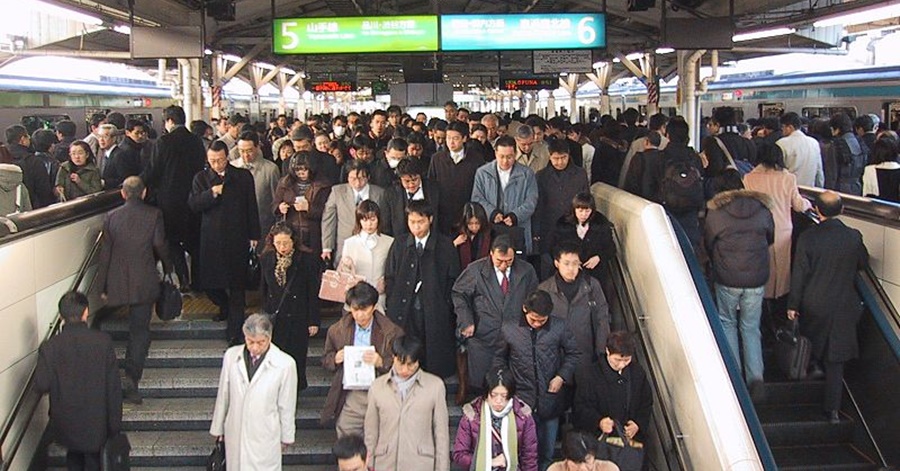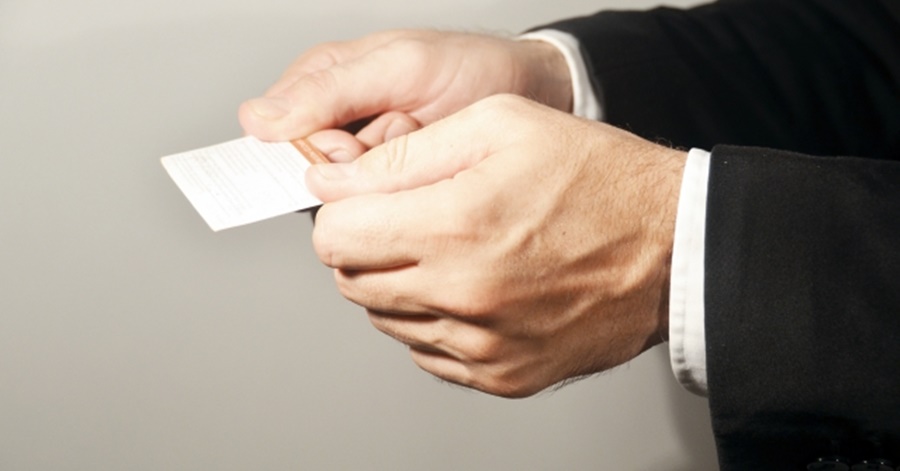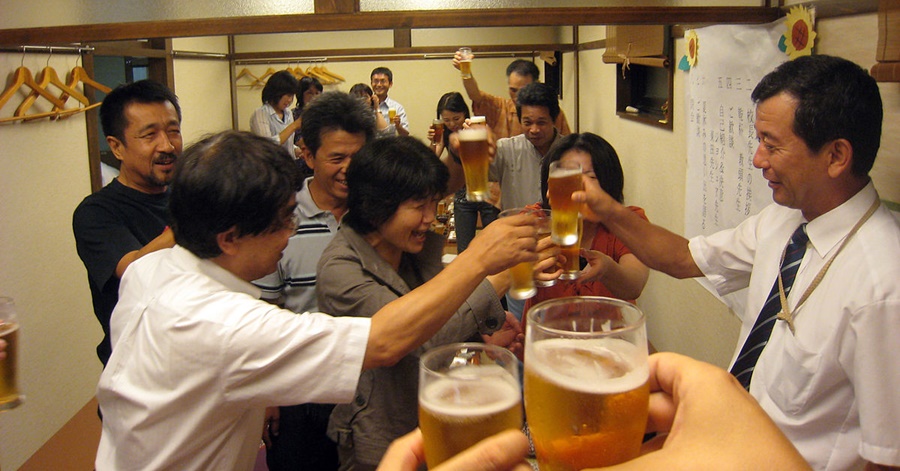Japan is characterized by a formal, high “power-distance” culture. There are clear distinctions between bosses and subordinates, and everyone is expected to know their place as well as when and how to express themselves.
READ ALSO: 5 Things OFWs Need To Know Before Working in Japan
Traditionally, Japanese society has very rigorous etiquette norms that apply to every occasion, from interactions between neighbors to interactions between consumers and store personnel, politicians, and every other social situation under the sun. These regulations and customs are perceived most acutely by expatriates in Japanese business relationships. In this guide, we will take a look at some of the aspects of Japan’s culture in terms of work, especially in the field of business.

Business Etiquette 101: How Not to Earn the Disapproval of Your Bosses in Japan
However, Japan as a whole, and the enterprises that populate the country, have a very distinct approach to social interactions and business. This alternative attitude can often be startling and perplexing for people who are not prepared to meet the country’s expectations. Here are some of the things that you need to consider to successfully acclimate in Japan’s work culture and increase your chances of success at work:

Japanese Business Cards
Here in Japan, an important aspect of business introductions is the presentation of business cards (meishi in Japanese). Business cards should be given with both hands, face up and facing the recipient. Accept a business card with both hands and go through the details with them. Make a point of treating every cards received with courtesy. Business cards should always be nice and crisp, and they should be kept in a solid container carried in a briefcase or shirt pocket, rather than in a wallet. Also, never write anything on a business card you get. The condition of a person’s business cards reveals a lot about that person’s personality.

How to Exchange Business Cards in Japan
Aside from the appearance of the card, the manner in which it is presented also plays a factor. You should present them with both hands, with your information towards the person to whom you are delivering the card, so that it is easily readable. Pinch the card’s corners between your thumbs and index fingers. Handing cards with one hand or holding them between your index and middle fingers is a no-no.
As you pass your card, the other individual is likely to do the same. A small game begins here. Both parties will lower their cards in an attempt to place them beneath their opponent’s. This conduct demonstrates that you are humble and regard the other person to be more important than yourself. Of course, you will eventually trade cards. Hold your card with your left hand while taking the other with your right, always squeezing it between your thumb and index finger.
It is customary to read the card after receiving it and to keep it in a case or something similar. Avoid placing it in your wallet or any other area that could damage it or give the impression that you don’t care about it. This is only one of the ritualistic activities that occur frequently when meeting someone for the first time for business.
Japanese Business Attire
Despite the government’s Warm Biz and Cool Biz dress guidelines, business wear in Japan is still quite formal. Dark suits, white shirts, and muted ties are the dress code for men. For women, the same color guidelines apply, with pant suits or longer skirt suits being the most common manner of attire.
Always remove your shoes while entering a traditional Japanese residence or other traditional venues such as temples or restaurants. Typically, when this is required, there will be a visible step up to the inside where shoes are not permitted, frequently accompanied by a cubby where shoes can be stored and indoor slippers obtained. When in doubt, simply follow the lead of your hosts or other Japanese. One thing to keep in mind is that walking around barefoot is often not appropriate in these situations.
If you are going to be in a situation where you will be wearing shoes that do not require socks and will need to remove them, it is a good idea to take a pair of white socks to keep your bare feet from touching the slippers.
Other Tips
Practice introducing yourself in Japanese.
You will introduce yourself before the cards are exchanged. Shaking hands is acceptable and may be desired by both parties. Avoid: a long shake; a shake with two hands, cupping the other person’s; squeezing too tight.
You can also make a bow. When doing so, bow at a 45-degree angle and state your name and position in the firm. The other individual will almost certainly do the same. When bowing, you should also avoid looking up or at the other person. Men should bow with their arms along their torso’s sides, while ladies should combine their hands in front of their lower belly.
It is not appropriate to bow and shake hands at the same moment.
Even if you don’t speak Japanese fluently, attempt to introduce yourself in Japanese the first time you meet someone. When introducing yourself, the simplest phrase to remember is: “Haji-me-ma-shi-te. XX desu.” My name is XX. It’s nice to meet you.
Being able to use a few key phrases demonstrates that you’ve done your study and already distinguishes you from many of your competitors.
Prepare your collateral.
Another critical component of your presentation is the way you introduce your organization. Japan, for the most part, is a paper-based civilization. It is usually preferable to have hard copies of any document, presentation, or brochure that you intend to provide to prospective business partners.
It also helps to invest time and money in a Japanese translation. Even if the folks you’re meeting speak English fluently, such a presentation demonstrates attention to detail and consideration for your colleagues. Regardless, selling a concept in the local language of individuals you wish to consider it is always easier.
Keep in mind that Japanese companies enjoy receiving what may appear to you to be insignificant information. Make sure your company brochure includes the year it was founded, its capital, and/or the number of employees (this speaks for the size, reach and potential of the company). Include the names and contact information for the founder, partners (and their titles), as well as the products or services offered by the company. Even current client names are something that most Japanese companies like to see, especially if you are a startup. The folks you’re meeting may already be aware of all of this information as a result of talks you’ve had prior to the first encounter, but having hard copies will still be beneficial.
Make sure to define what you’re searching for as simply and directly as possible in your brochure (OEM, technology investment, strategic partnership, capital investment, or anything else that you think you should include).
Finally, make sure your value position is highlighted, and explain how your value proposition suits your target and how collaboration could benefit them.
Be on time (10 minutes early).
In Japan, being on time is synonymous with being late. As a result, it is critical to arrive a little early to any business meeting. Before leaving for your destination, make sure you know exactly where you’re going – especially if your meeting is in the morning, as you may have to contend with crowded trains during rush hour. If you have a few extra hours, it wouldn’t hurt to pay a visit to the meeting location the day before the actual appointment.
Prepare for riding a taxi.
If you opt to take a taxi, ensure the address is written in Japanese, as you may not be able to find an English-speaking driver.
Facebook is the new LinkedIn.
People may ask you for a means to connect during or immediately after your meeting. Because LinkedIn is not extensively used in Japan, people may ask you to connect through Facebook. Creating a custom Facebook list could be beneficial. Above all, alter the privacy settings on any personal stuff to avoid embarrassment when you begin accepting friend requests.
Remember your honorifics.
Most of us are aware that Japanese people utilize a variety of suffixes while communicating with one another. Which one(s) should you go with? And should you address someone by their first or last name?
In general, you should refer to them by their last name, followed by san (i.e. Kimura san). You might instead use the suffix sama instead (although this conveys a very high level of respect that might not be necessary depending on the situation). If someone asks you to call them by their first name, it’s fine to do so, but it’s best to follow with san (i.e. Akira san), unless otherwise instructed.
Plan roles ahead – and stick to the plan.
If you are part of a team and will all be attending the business meeting, make sure to outline all of your roles ahead of time. Avoid engaging in conversations or responses that may indicate even minor disputes or differing points of view. It isn’t necessarily a bad trait, but when dealing with people who aren’t as fluent in English as you are, it might lead to uncertainty and skepticism. Each person designated as a speaker by the team should be the only one tackling particular themes and should be able to be extremely clear and precise about their function (the whole jack of all trades thing doesn’t really fly in Japan).
On that topic, it is critical to keep your language professional while also being clear and easy to understand. Enunciation, slowed speed, and volume (but not too loud) are all important considerations. Your word choice, on the other hand, is as crucial. Certain idioms that are quite prevalent in English-speaking countries are generally unheard of elsewhere, so even a good English speaker may not comprehend several slang words or twists of phrase if they are not acclimated to a particular country.
Timing your pitch is as important as the pitch itself.
To avoid wasting time trying to give your pitch, it may be useful to have a few terms or concepts previously translated into Japanese. A visual representation of your pitch will also make a good impression, explain things, and save you time.
Keep your presentation short and sweet.
Always allow for time for translations, interpretations, further explanations, speaking more slowly than usual, and inquiries. If your meeting is intended to take an hour, plan ahead of time how you can cut it in half if interpretation is taking longer than it should. It is always easier to add information to a prepared pitch than it is to eliminate it.
Manage your expectations.
What do you hope to gain from your interactions in Japan? The quick solution is “don’t anticipate too much.” In general, Japanese corporations seek long-term relationships. In and of itself, regardless of the country, this type of commitment necessitates some thought.
This is especially true in Japan. Decision-making in Japanese organizations is typically a lengthy process that requires a specific proposal to go through a number of loops and pass through a number of hands before it is given the “go ahead.” It’s highly improbable that you’ll get a “yes” or “no” answer at your first meeting. Most of the time, folks will approach the meeting as if they were reading from a script.
Even if you believe the meeting went really well, don’t broadcast success to people back home: wait until the follow-ups to find out where things truly stand.
This attitude should not be perceived as a refusal to accept a proposal, but rather as a stance indicating that you have been heard and will be considered in the appropriate setting. If you are dissatisfied with the answers (or lack thereof), do not press for instant explanation; instead, wait until your follow-ups. And, if you have a facilitator in the middle, ask her or him for a read on the issue after the meeting.
After the meeting is when the actual business begins.
When a meeting concludes in Japan, the meeting continues. The atmosphere is absolutely different. Meetings are frequently held in restaurants or pubs. In Japan, food and wine are employed as a social lubricant. This is a way to connect with the person rather than the business partner. You will not be judged much during these more goliardic components of the sessions, but it is your opportunity to make yourself more pleasant, and it is acceptable to let loose a little.
You will almost always be expected to drink (likely a lot). It’s completely acceptable not to. It’s best to be open to avoid unpleasant situations (like as turning down someone who offers to pour you a cup of sake). The same is true if you have any dietary restrictions or allergies.
Be ready for after-work parties.

You will almost always be required to consume alcohol (likely a lot). It’s completely acceptable not to. To avoid uncomfortable circumstances, it is best to be transparent (like as turning down someone who offers to pour you a cup of sake). The same is true if you have any food allergies or dietary limitations.
It’s all about having fun at this point, but sometimes calculated fun. You want to make sure that you connect with people, therefore it’s critical that you avoid alienating them.
Karaoke is a popular hobby in Japan after dinner and drinks. You could be a fantastic vocalist or a terrible one. Nobody will care or pay attention to it. It’s all about unwinding and bonding with one another. This does not preclude you from making certain deliberate decisions that will make your gathering more comfortable.
Returning to the Facebook group you may have started before your meeting, make sure that if you snap images of the event, you ask permission to publish them ahead of time. Going a little crazy with co-workers and business partners is not seen as shameful in Japan, but rather as bonding. Still, it’s best to inquire in order to avoid any potential animosity.
Follow up.
It’s always a good idea to call the folks you met with a follow-up message a few hours after the meeting, or the next morning. This message can be pretty professional, however it is advised that the focus be on the time spent together. Thank them for their time, for having fun, and for their dedication to your project. Mention how much fun you had in the country and with the individuals you met. This is a very frequent ritual in Japan, and let’s face it, it’s always pleasant to get such a message.
Take some time off for yourself.
You’re all set for your business trip and meetings, but don’t forget to take some time to unwind and enjoy Japan. It will be well worth the effort.
While you’re at it, especially if you’re the type of person who can’t unplug, use your time to visit department stores, music stores, and any other location that might be linked to your business (or not). You will be able to better appreciate Japan’s degree of enthusiasm, attention to detail, packaging, and presentation. It will undoubtedly provide you with a greater understanding of the people, the country, and the country’s business procedures.
Doing business here in Japan may be intimidating at first. But on the brighter side, the advantage of being a foreigner is that most Japanese will not expect you to know all of their etiquette norms and will be quite accommodating and courteous to those of us who are not as familiar with how things should be done. As a result, the best rule to follow is to be as polite as possible and to listen to your hosts.
READ NEXT: How to Find a Job and Work in Japan


